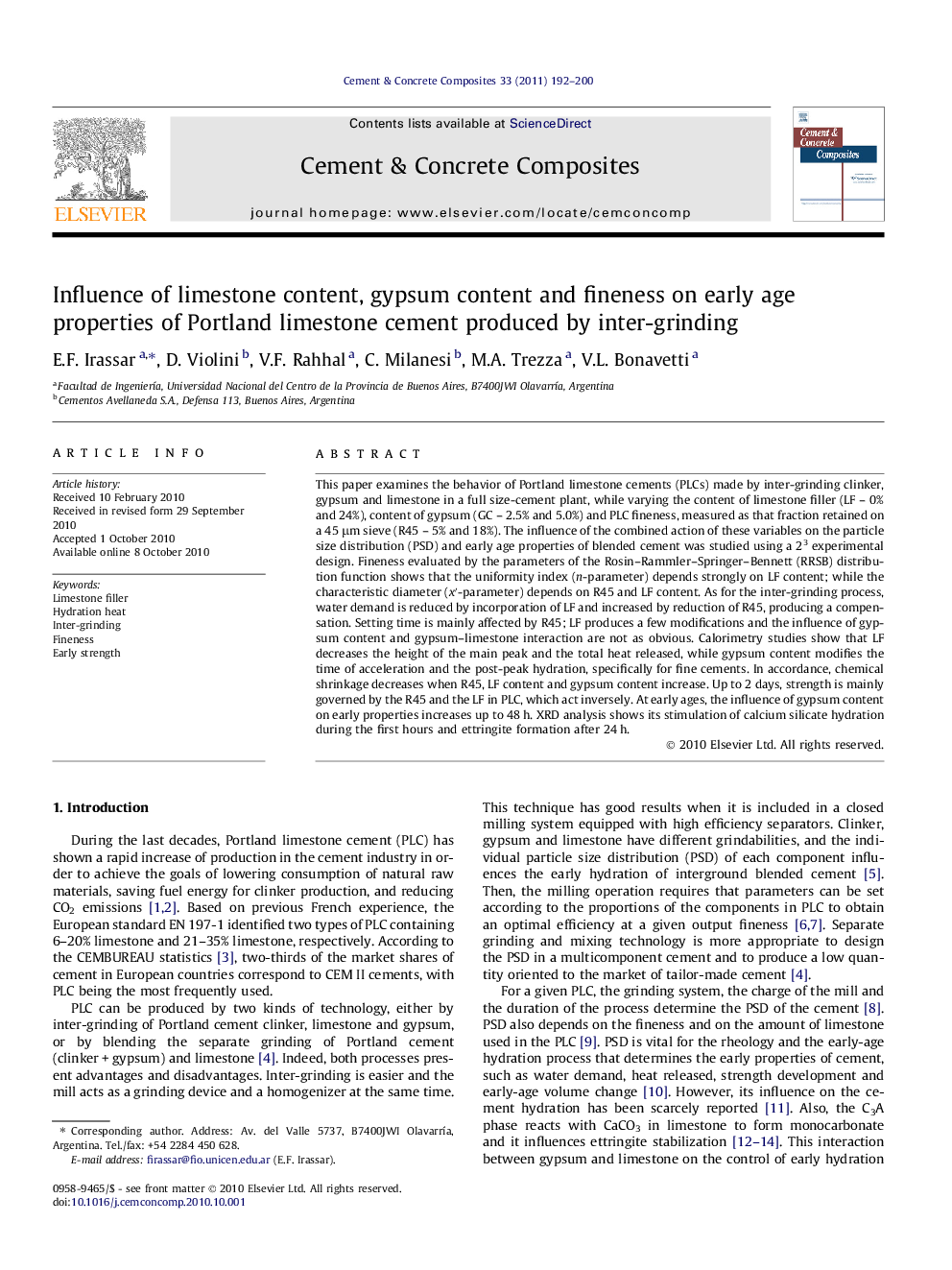| Article ID | Journal | Published Year | Pages | File Type |
|---|---|---|---|---|
| 10621909 | Cement and Concrete Composites | 2011 | 9 Pages |
Abstract
This paper examines the behavior of Portland limestone cements (PLCs) made by inter-grinding clinker, gypsum and limestone in a full size-cement plant, while varying the content of limestone filler (LF - 0% and 24%), content of gypsum (GC - 2.5% and 5.0%) and PLC fineness, measured as that fraction retained on a 45 μm sieve (R45 - 5% and 18%). The influence of the combined action of these variables on the particle size distribution (PSD) and early age properties of blended cement was studied using a 23 experimental design. Fineness evaluated by the parameters of the Rosin-Rammler-Springer-Bennett (RRSB) distribution function shows that the uniformity index (n-parameter) depends strongly on LF content; while the characteristic diameter (xâ²-parameter) depends on R45 and LF content. As for the inter-grinding process, water demand is reduced by incorporation of LF and increased by reduction of R45, producing a compensation. Setting time is mainly affected by R45; LF produces a few modifications and the influence of gypsum content and gypsum-limestone interaction are not as obvious. Calorimetry studies show that LF decreases the height of the main peak and the total heat released, while gypsum content modifies the time of acceleration and the post-peak hydration, specifically for fine cements. In accordance, chemical shrinkage decreases when R45, LF content and gypsum content increase. Up to 2 days, strength is mainly governed by the R45 and the LF in PLC, which act inversely. At early ages, the influence of gypsum content on early properties increases up to 48 h. XRD analysis shows its stimulation of calcium silicate hydration during the first hours and ettringite formation after 24 h.
Related Topics
Physical Sciences and Engineering
Engineering
Industrial and Manufacturing Engineering
Authors
E.F. Irassar, D. Violini, V.F. Rahhal, C. Milanesi, M.A. Trezza, V.L. Bonavetti,
